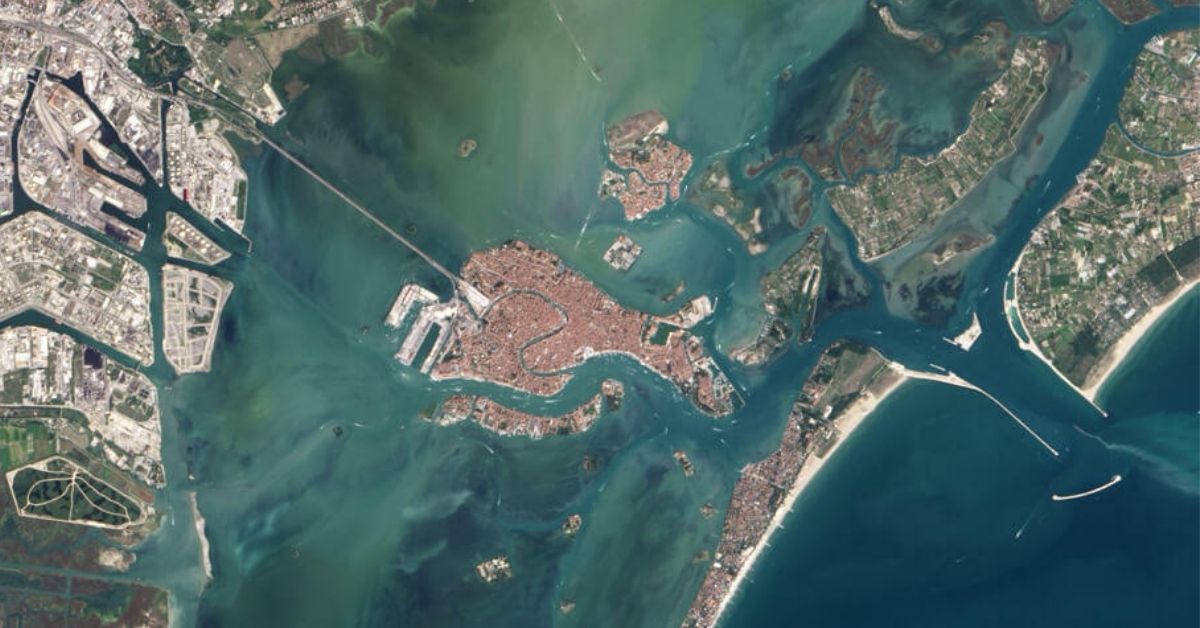
At first glance, it seems as if Venice is lagging behind on the ecological path to a sustainable society. If you stand on the world-famous Rialto Bridge, for example, you can hear the endless chugging of diesel engines of the countless vaporettos and other boats below you. One more thing, only a year ago the first electric charging station (for the shipping sector) was installed. Soon there will be three more…
But this image of Venice is not in step with the as-yet-unseen developments in the background. Since this year, Venice has had an acceleration program in place for sustainable development, where start-ups in a ( yet to be renovated) Venetian palazzo take the plunge. All this under the umbrella of stakeholders, such as international energy companies, local SMEs, the university and multi-tier public governance.
That in itself is not a message to be particularly bowled over by. But the Venice Sustainability Innovation Accelerator, or VeniSIA for short, is not just a driver of development, states Carlo Bagnoli, scientific director of VeniSIA. The ultimate goal is for Venice, the city, to become itself the accelerator of innovation.

This calls for an explanation. We called Bagnoli, who is also a professor of business administration at Ca’ Foscari, the University of Venice.
Venice keeps flooding and is a victim of climate change. What is the situation at the moment?
Venice has a number of problems concerning environmental and social sustainability. High water levels are obviously an issue, even if it helps that the so-called Moses Dam was commissioned in 2020.
So that problem has been solved?
We are dealing with lots of other environmental challenges, such as improving air and water quality. We do have to contend with some unique features of a city built on water. For example, Venice does not have easy access to renewable energy sources for buildings and means of transportation, and it is very difficult to make all those historic buildings energy neutral.
What is the biggest challenge for social sustainability?
The population of the historic center is declining every year. In sixty years, the city has shrunk by two-thirds. Venice is now down to about 50,000 inhabitants.
How do you plan to address these problems?
I sometimes jokingly say: let’s turn Venice into an amusement park. We’ll open the floodgates at the end of the afternoon so that tourists can wade through the floodwaters before the park closes.
What’s another option?
Do something about it. A city must be lived in and worked in, otherwise it is not a living city. VeniSIA’s approach provides for the vigorous development of ecological and social sustainability.
We are going to tackle the climate crisis by developing innovation in a place that is under pressure precisely because of global warming. Consequently, we are going to massively promote the use of telecommuting and initially attract 500 people from around the world who work in the high-tech sector. In addition, we launched an international appeal for ideas. We received over 1,500 applications in two months. A selection of eleven innovations was made from these, which will be accelerated in Venice.
Why would a high-tech teleworker want to live and work in Venice?
Venice has a considerable appeal of its own, but there has to be a network that high-tech workers want. American research shows that telecommuters are fine with working remotely if their workplace has at least three aspects: fast data lines, tax advantages and an international environment.
Is Venice actually properly wired up?
Yes it is. In addition, foreign workers working for a non-Italian company benefit from a low tax rate. This international community of innovators will work on solutions for environmental and social sustainability. They in turn will draw in other innovators and investments.
There are other innovation hubs in the world, though. Why Venice?
What makes Venice unique is that the historic center of Venice covers only 5 square kilometers and has 50,000 inhabitants. This makes Venice a living innovation hub. Not only are innovative solutions being conceived here, but those solutions can also be immediately put into practice. You can experiment throughout a whole city. It then becomes a showroom at the same time.
Are there any visible results?
Well, apart from the incubator program, more and more start-ups are coming to Venice precisely because of this idea of Venice as a laboratory. For example, Zero Farms, a developer of vertical farming systems from the countryside around Venice, is planning to build a pilot plant in Venice.
What other kinds of innovation is Venice attracting?
In addition to VeniSIA, Venice is at the heart of numerous other projects. For example, the petrochemical port of Porto Marghera, which lies opposite Venice, is being transformed into a hydrogen district. This area is not only intended for hydrogen production but is the center of all activities related to hydrogen and other sustainable technologies. These range from a specific valve to whole infrastructure projects. Our companies can handle it. Veneto, the region of which Venice is the capital, has one of the highest percentages of SMEs in Europe.
Is an electric vaporetto going to work?
It is coming. Meanwhile, the hybrid vaporetto was launched about a year ago. It is equipped with a combustion and electric engine.

In this regard, it is nice to report that last week Phillippe Starck presented the model of the sustainable gondola of the future, He designed it specifically for VeniSIA. The designer incorporated sustainable high-tech materials and technology into it, such as bio-resin from seaweed and compressed bamboo. It represents a symbol of Venice’s sustainable future.
Read about the Moses dam and Venice’s first electric charging station.



